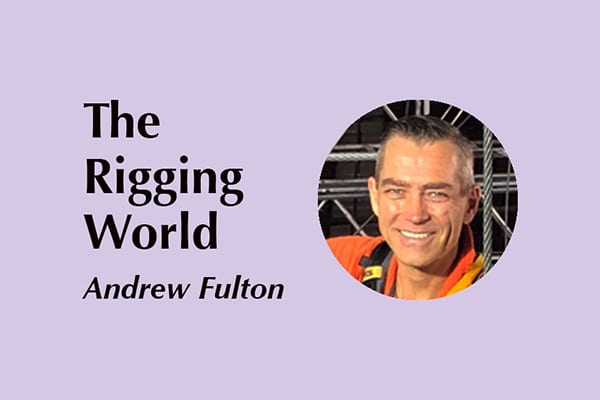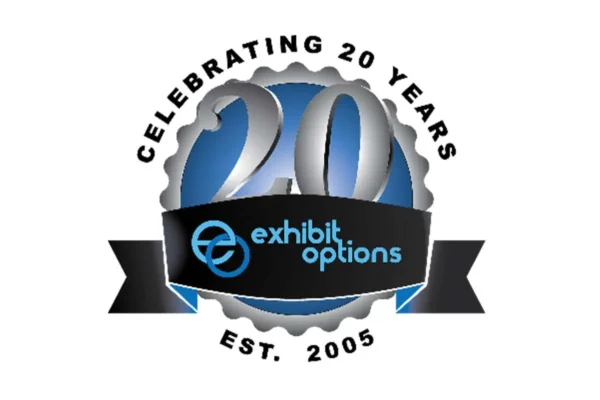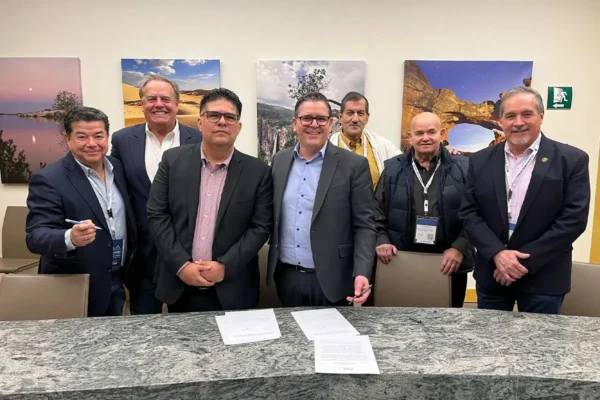The Rigging World by Andrew Fulton
Last issue I talked about the importance of always rigging with the correct eyebolts. Well, this educational saga continues with a real-life story that illustrates why using the correct eyebolts is absolutely crucial.
It was 2018. I was assigned the responsibility to design and manage the rigging installation for a very prominent exhibitor at the Las Vegas Convention Center. It turned out, my team and I would be working for the same company that the previous year, had rigged a CES booth 180 degrees out. As we were sitting in a production meeting with these folks, this company’s senior project manager started the discussion by telling our team the story of the previous year’s fiasco and how that can’t happen again.
I explained that we knew all about the incident and provided assurance that the booth would be rigged in the correct orientation, and the conversation moved on. As the orientation and planning continued, we learned something interesting about the project: the 15K 100’ LED wall that would span the booth was to have a custom-made bumper that would be built by their shop. This raised immediate concerns with us.
I asked why the standard bumper that comes with the LED wall wouldn’t be used. The reason? The exhibitor wanted a white bumper to match the décor in the booth.
Fortunately, there are rules for this sort of thing. All custom-made rigging apparatuses to be used for overhead lifting (below-the-hook lifting hardware, for instance), must be designed by a structural engineer and must adhere to ASME Standards and OSHA CFRs.
When I told the PM that it was critical that this bumper be engineered and built exactly to ASME Standards and OSHA CFRs, he assured us that it would be. I made sure to mention that detailed drawings had to be submitted, and that they had to have a structural engineer’s stamp from the engineer registered in the state that the custom rigging device would be used.
After leaving this meeting, I called the General Rigging Foreman for the General Contractor overseeing the tradeshow. It was paramount that the supervisor know about this custom bumper the booth builder intended to fabricate. I recommended sending the booth builder’s project manager the ASME Standards and OSHA CFRs pertaining to the requirements for custom “below the hook” rigging equipment. The foreman agreed and sent all the pertinent information to the exhibit house.
Fast forward to December 22 at the convention center: the booth was looking great; that morning we were waiting for the custom 100’ LED bumper to arrive. Not too long after starting the day, a forklift approached the booth, pushing a large skid across the floor. Strapped down to this pallet were five 20-foot-long pieces of 4’x6” HSS tube steel. I immediately spied a serious problem with the fabrication.
The problem? The half-inch Chicago eyebolts that were intended for the “pick-up” points on the bumper’s top, that one-ton chain hoists would attach to (in order to lift and support the LED wall), had been welded! Eyebolts are NEVER to be welded; a pad-eye can be welded, but not an eyebolt. This is a terrible practice that should never happen.
Next issue will have the rest of this very serious story as the educational saga continues. For now and ‘till next time…RIG SAFE, RIG RIGHT, RIG FOR SUCCESS!
Andrew Fulton is dir. of rigging/part owner of Rigging International Group, a Las Vegas-based rope access company that provides rope access training, rigging, welding, NDT inspection and highly-skilled technicians who specialize in challenging work at height projects for various industries. Currently, he is the lead production rigger at UNLV’s Thomas & Mack Center and manages projects for the Las Vegas PRG office. He is available for consultation and training and can be reached at andrew@rigintlgrp.com.






























